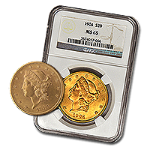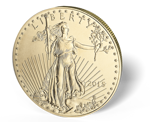The 2016 Silver Austrian Philharmonic
The Austrian Silver Philharmonic is a bullion coin, graded as .999 fine pure silver. Each coin consists of the standard 1 troy oz of pure silver that can be found in other government minted coins. This coin measures 37mm in diameter, which is slightly smaller than the Silver American Eagle (40.6 mm) or Silver Canadian Maple Leaf (38 mm.)
Imagery of the Philharmonic
The philharmonic orchestra of Vienna is a source of great cultural pride for the Austrians, so it comes as no surprise that the Austrian Silver Philharmonic borrows from the same rich imagery as the Gold Austrian philharmonic, which consists of various instruments that make up the sounds of the Vienna Philharmonic Orchestra.
The obverse, or front, side of the coin displays the inscription “REPUBLIK OSTERREICH,” for “Republic of Austria,” as well as the word “silver” in German, the language of the issuing country. It also reveals the weight of silver in troy ounces, as well as the face value of the coin, which is 1.5 euro. An image of the celebrated grand organ in Vienna’s Musikverein, the world famous concert hall and home of the Vienna Philharmonic Orchestra, a structure built on land donated by Emperor Franz Joseph, which opened in 1870. Inside the Musikverein is the Golden Hall, which houses the great organ that was installed in 1907. Interestingly, the Golden Hall was not built to the currently accepted acoustic standards but rather is long, narrow and tall. It measures around forty-eight meters long, nineteen meters wide, and eighteen meters high but still seats over 1,700 people with room for an additional 300 standing individuals.
The reverse, or back, design of this silver coin features an assortment of instruments, including a string bass, cellos, violins, a bassoon, harp and Viennese horn, symbolizing Austria’s abundant musical and cultural tradition. The words Wiener Philharmoniker (translated to “Vienna Philharmonic,”) are also on the obverse side.
The Austrian Mint Began With a King’s Ransom
Silver Vienna Philharmonic coins were first struck in 2008 by the world renowned 800-year old Austrian Mint. The history of the Austrian Mint is a long and celebrated one. It is located close to the historical center of Vienna, Austria. In the evolution of its 800-year history, the Austrian Mint has exhibited the finest traditions of minting and can take pride in a reputation for producing not only some of the most attractive coins in Europe, but also showing a high technical skill level.
The Austrian Mint traces its origin all the way back to the year 1194. During this time, Austria’s Duke Leopold V had a falling out with King Richard resulting from an insult by the English monarch. In attempting to pass through the area undetected during the Crusades, he was captured and an astounding ransom of 150,000 marks (65,000 pounds of silver) was paid for King Richard’s freedom, which was used to create silver coinage for the Austrian Empire.
The mint was first established in Vienna, but was relocated a number of times. At one point it was housed in Prince Eugene’s winter palace, before finally being relocated to its current site at Heumarkt, central Vienna, in the 19th century.
Although there have been other mints that have been utilized in Austria through the years, the Vienna Principal Mint outlasted the others when the Republic of Austria formed in 1919. The name of the mint was modified to Münze Österreich (“Austrian Mint”) when it was subsidized by of the National Bank of Austria in 1989
This long history of coin production has made the Austrian Mint into one of the world’s most well known and skilled mints and helps explain why the Silver Austrian Philharmonic is one of the most alluring silver bullion coins today.














